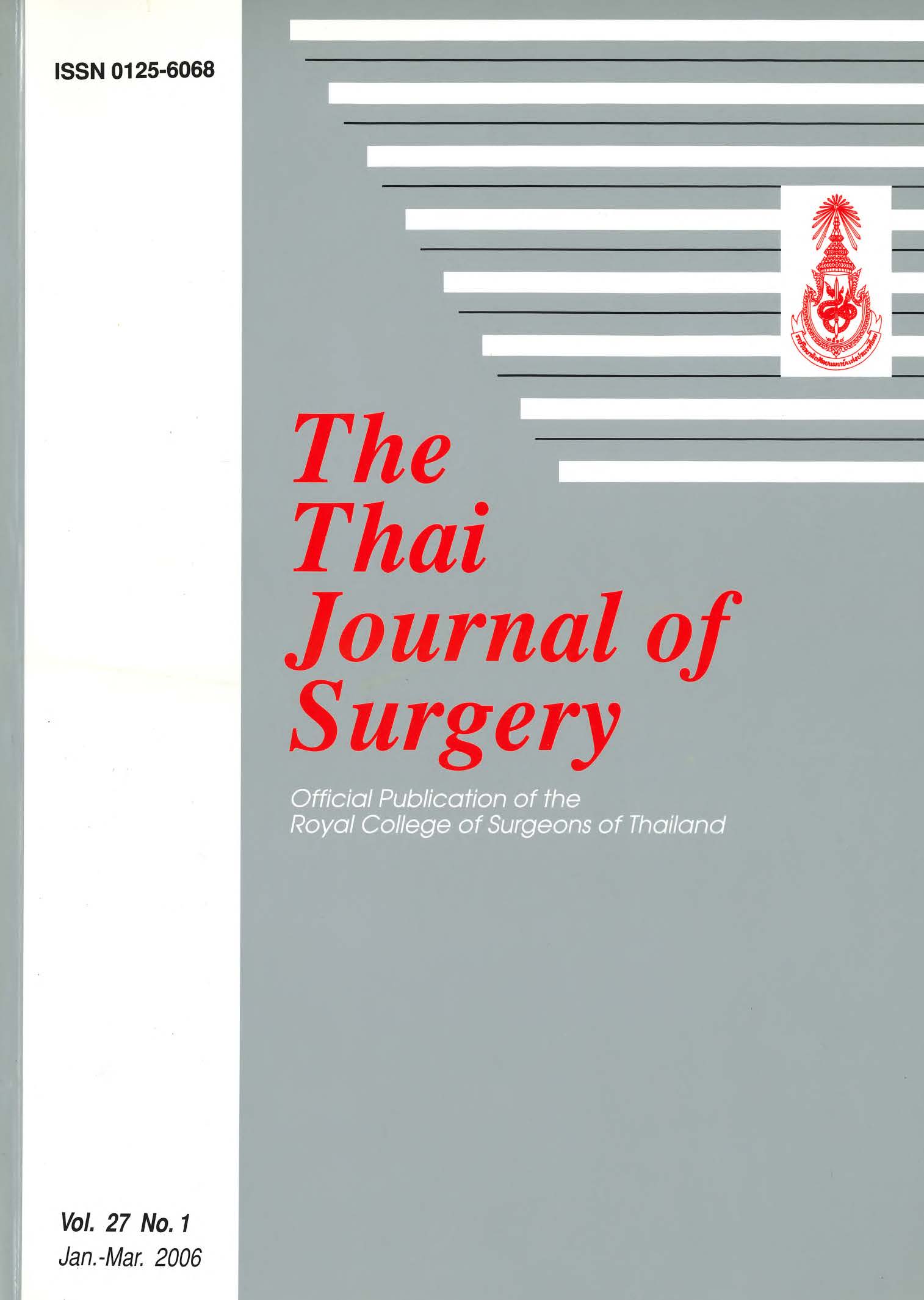Extravasation Injury: What is the Appropriate Management of Extravasated Skin Ulcer?
Abstract
Background: Extravasation injury can cause a serious problem from significant soft tissue necrosis. The proper treatment is always being delayed before being referred to surgeons.
Objective: To study the appropriate surgical management of the extravasated skin ulcer.
Patients and Methods: During August 2001 and January 2003, there were seven patients (5 males, 2 females) suffering from extravasation injuries; 5 cases from chemotherapeutic agents (Doxorubicin HCL, Epirubicin) and 2 cases from calcium. Early radical debridement of necrotic tissues and either immediate or delayed reconstruction were successfully performed using either skin flaps or skin grafts if direct closure is impossible.
Results: There were one partial flap necrosis and one minimal wound dehiscence. They healed after secondary minor surgery.
Conclusions: Prevention of extravasation injury is the best policy because once this serious injury develops it will be difficult to heal by conservative treatment. Early radical debridement of the necrotic or non-healthy tissues with immediate or delayed skin coverage is recommended.
References
2. Heckler FR. Current thought on extravasation injuries. Clin Plast Surg 1989; 16: 557-63.
3. Rudolph R, Larson DL. Etiology and treatment of chemotherapeutic agent extravasation injuries. A review. J Clin Oncol 1987; 5: 1116-26.
4. Scuderi N, Onesti MG, Antitumor agent. Extravasation management and surgical treatment. Ann
Plast Surg 1994;32: 39-44.
5. Upton J, Muliken JB, Murray IE, Major intravenous extravasation injury. Am J Surg, Apr 1979: 137: 497-506.
6. Shenaq SM, Albase EA, Friedman JD, Soft-tissue reconstruction following extravasation of chemotherapeutic agents. Surg Oncol Clin North Am 1996; 5: 825-45.
7. Loth TS, Eversmann WW. Extravasation injuries in the upper extremity. Clin Orthop 1991; 272: 248-54.
8. Millam DA, Managing complication of iv. therapy, Nursing 1988;18: 34-43.
9. Laurie SWS, Willson KL, Kernahan DA, Bauer GS, Vistnes LM. Intravenous extravasation injuries: the effectiveness of hyaluronidase in their treatment. Ann Plast Surg 1984; 13:191-4.
10. Dufresne RG Jr. Skin necrosis from intravenous infused materials. Cutis 1987; 39: 197-8.
11. Raszka WV Jr., Kueser TK, Smith FR, Bass JW. The use of hyaluronidase in the treatment of intravenous extravasation injuries. J Perinatol 1990; 10:146-9.
12. Casanova D, Bardot J, Magalon G. Emergency treatment of accidental infusion leakage in the newborn: report of 14 cases. Br J Plast Surg 2001; 54: 396-9.
13. Cohen FJ, Manguro J, Bezozo RC. Identification of involved tissue during surgical treatment of doxorubicin-induced extravasation necrosis. J Hand Surg (Am) 1983; 8: 43-5.
Downloads
Published
How to Cite
Issue
Section
License
Articles must be contributed solely to The Thai Journal of Surgery and when published become the property of the Royal College of Surgeons of Thailand. The Royal College of Surgeons of Thailand reserves copyright on all published materials and such materials may not be reproduced in any form without the written permission.



